Immerse yourself in the rich heritage of Hoi An's four traditional craft villages. Witness skilled artisans creating intricate pottery, vegetable farming, delicate lanterns, and exquisite woodcarvings.
Explore the timeless charm of these ancient Hoi An Craft Villages.
List of Contents
1. Tra Que Vegetable Village

The Hoi An Craft Villages are a must-see for any health-conscious traveler. Among them, Tra Que Vegetable Village stands out, just a short distance from the heart of Hoi An's ancient town. This fertile land, nestled between the Tra Que seaweed swamp and the De Vong River, is a vegetable paradise.
What sets Tra Que apart is the villagers' use of seaweed fertilizer, resulting in unique, high-quality produce. With over 40 types of vegetables and herbs, like perilla, basil, coriander, and laksa leaves, Tra Que's bounty is a key ingredient in many of Hoi An's signature dishes.
Visitors can immerse themselves in the farming experience, learning the steps of vegetable cultivation alongside local farmers. The reward? Enjoying the freshest salads straight from the source.
Tra Que, meaning “cinnamon tea,” has a rich history dating back over 300 years. The villagers' transition from fishing to herb and vegetable farming has created a thriving community known for its peaceful atmosphere and lush greenery.

Despite its small size, Tra Que plays a vital role in supplying fresh produce to Hoi An's restaurants and households. The farmers' dedication and special techniques ensure the highest quality vegetables, with some ready for harvest in just 20 days.
When visiting, don't miss the chance to join a cooking class at the Waterwheel restaurant, where you can learn local recipes using the freshest ingredients. You can also discover the art of making rice paper, a staple in many Vietnamese dishes, at a village workshop.
For an authentic experience, savor a dinner featuring Banh xeo, papaya salad, and three friends at one of Tra Que's organic farms.
2. Thanh Ha Pottery Village
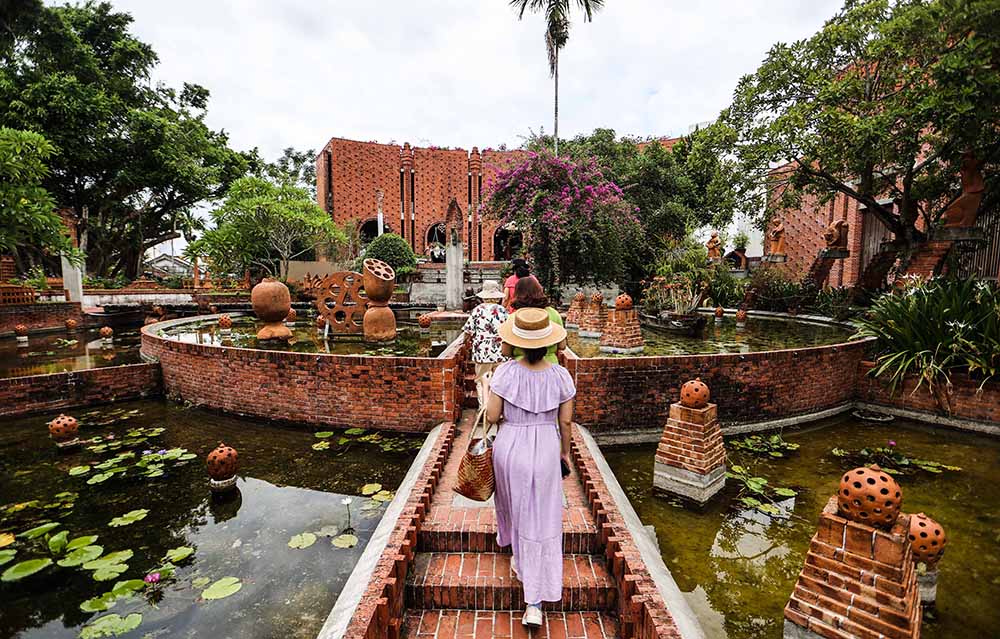
Thanh Ha Pottery Village, one of the most renowned Hoi An Craft Villages, sits along the tranquil banks of the Thu Bon River, a mere 3km from Hoi An's city center.
This expansive pottery village dates back to the late 15th and early 16th centuries, established by immigrants from regions like Hai Duong, Nam Dinh, and Thanh Hoa. These settlers brought with them their ancestral pottery-making traditions, which have defined Hoi An's ceramic craftsmanship for centuries.
The village's products, crafted from dense, flexible, and highly adhesive brown clay, have left their mark on Hoi An's architecture, with buildings predominantly showcasing earthy tones of dark red, yellow, and brown. Visitors to Thanh Ha can witness the pottery-making process firsthand and even try their hand at creating their own ceramic masterpieces.
Despite its proximity to Hoi An, Thanh Ha remains a hidden gem. Accessible by bus or boat, the village offers a glimpse into its rich history and the artisans' dedication to preserving their pottery-making heritage.
The craft flourished in the 18th century due to Hoi An Port's prosperity, with skilled craftsmen employing traditional techniques passed down through generations for over six centuries.
The Thanh Ha Pottery Museum, a modern, open-air facility, provides a comprehensive experience for visitors of all ages. The two-story building houses a workshop, gallery, gift shop, and terracotta market.
Visitors can immerse themselves in exhibitions showcasing Hoi An's pottery history and poetic ambiance, listen to ancestral stories and tales, or simply absorb the soul of the land.
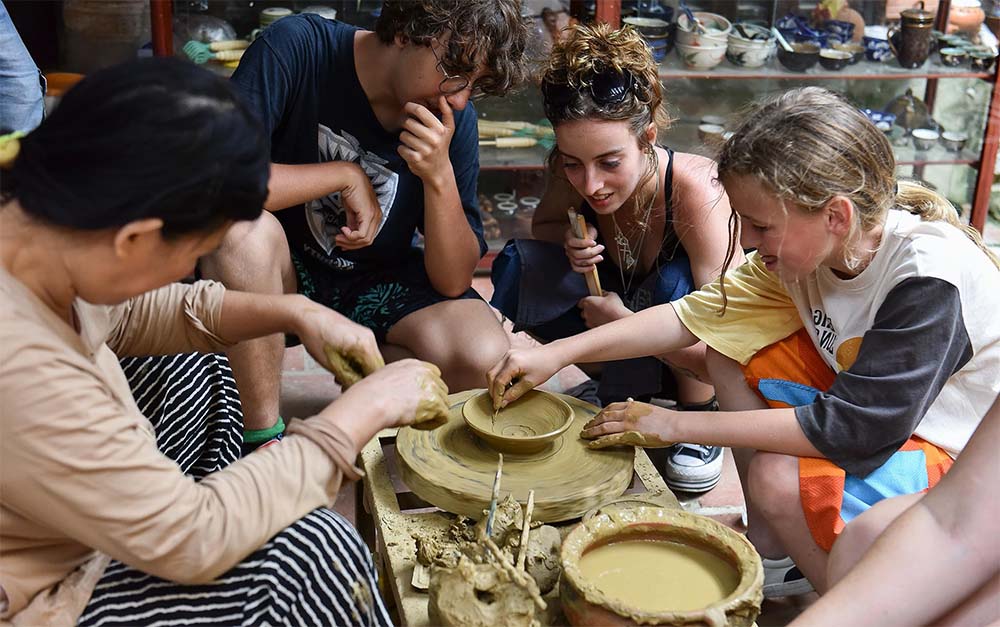
The Terracotta Park offers a unique twist on traditional sculpture parks, featuring miniature displays of world-famous architectural wonders like the Statue of Liberty, Leaning Tower of Pisa, and Taj Mahal. Visitors can touch these artworks and imagine the craftsmanship that went into creating them decades or even centuries ago.
For families, the museum's lower level provides hands-on activities for children, such as pottery making and mask painting, allowing them to explore and engage with the exhibits in a tactile way.
3. Kim Bong Carpentry Village
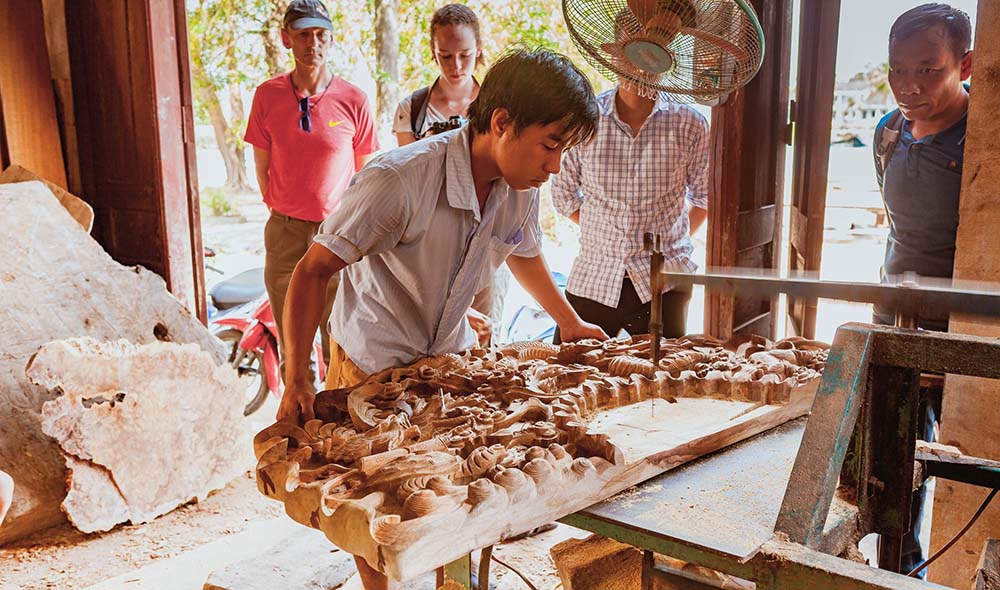
Kim Bong Carpentry Village, a serene Hoi An craft village, lies across the Hoai River, offering a tranquil escape from the bustling old town center. The village's peaceful atmosphere makes it a perfect hideaway for those seeking solace, especially during the full moon festival.
Reaching Kim Bong involves crossing a bridge and a 3-kilometer walk or drive. Established in the 15th century by migrants from Thanh Hoa, Nghe An, and Ha Tinh, the village flourished alongside Hoi An's trading port in the 17th and 18th centuries. As Hoi An urbanized, Kim Bong's carpentry reached its zenith, fueled by the growing demand for wooden boats, architectural works, and pagodas.
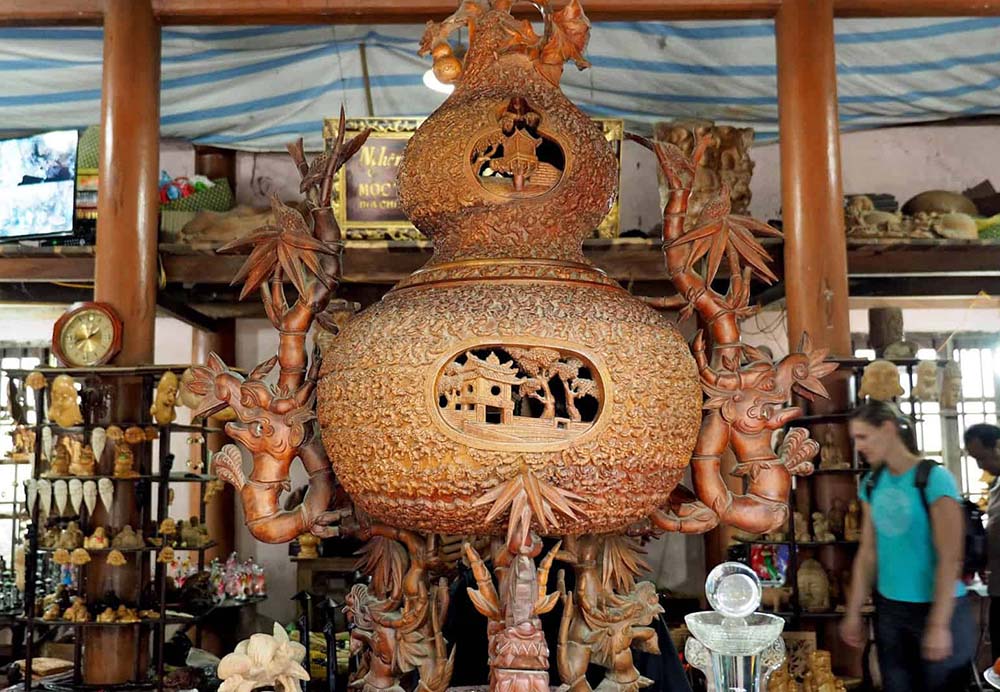
Today, Kim Bong's artisans continue to create fine carpentry and restore historical relics and architecture in Hoi An. Visitors can observe the carpentry process firsthand, making it a must-visit cultural and historical location.
Just a 10-minute boat ride from Hoi An, Kim Bong has supplied top-quality woodwork for over 600 years, from royal tombs in Hue to high-rise buildings in Hanoi and Saigon. The village's style is a unique blend of Japanese, Chinese, and Cham influences.
Kim Bong's artisans specialize in three areas: shipbuilding, civil wooden furniture, and ancient architectural construction. These groups have contributed to the village's robust development and the preservation of traditional craftsmanship and mastery.
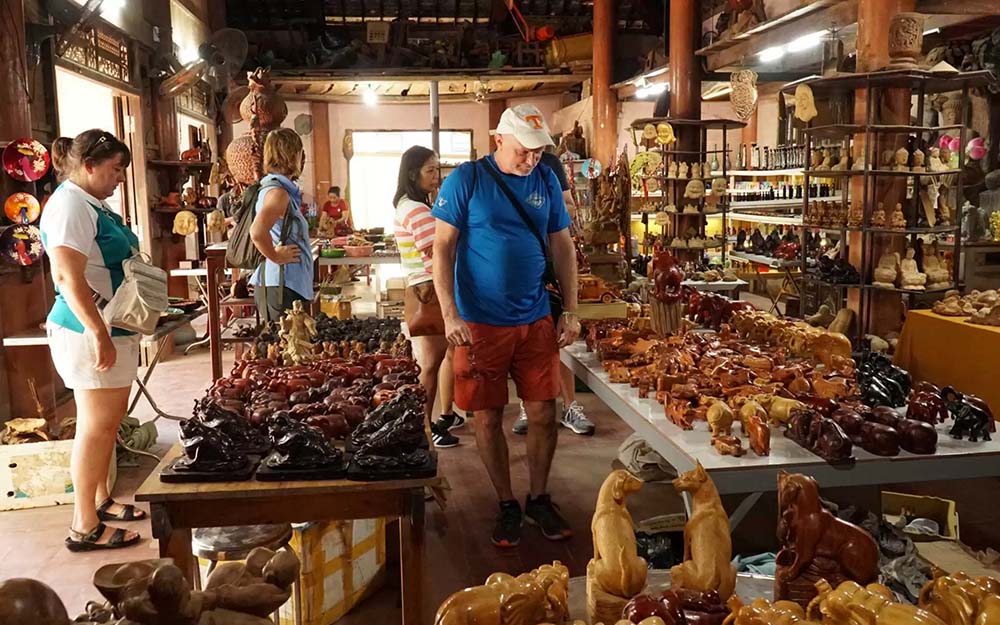
Visitors can explore two main streets lined with fine woodwork shops, showcasing the artisans' skill in transforming wood into water buffaloes, bamboo-shaped carved plates, and rustic wood pigs. Meeting Mr. Duong Ngoc Sang, a “living treasure” and expert in making and tuning gongs, offers a chance to learn from a master craftsman.
The village's fresh, peaceful countryside atmosphere and the pervasive scent of wood and paint create a captivating experience for visitors. With no entrance fee and easy access from Hoi An Old Town, Kim Bong Carpentry Village is a hidden gem waiting to be discovered.
4. Hoi An Craft Villages of Making Lanterns
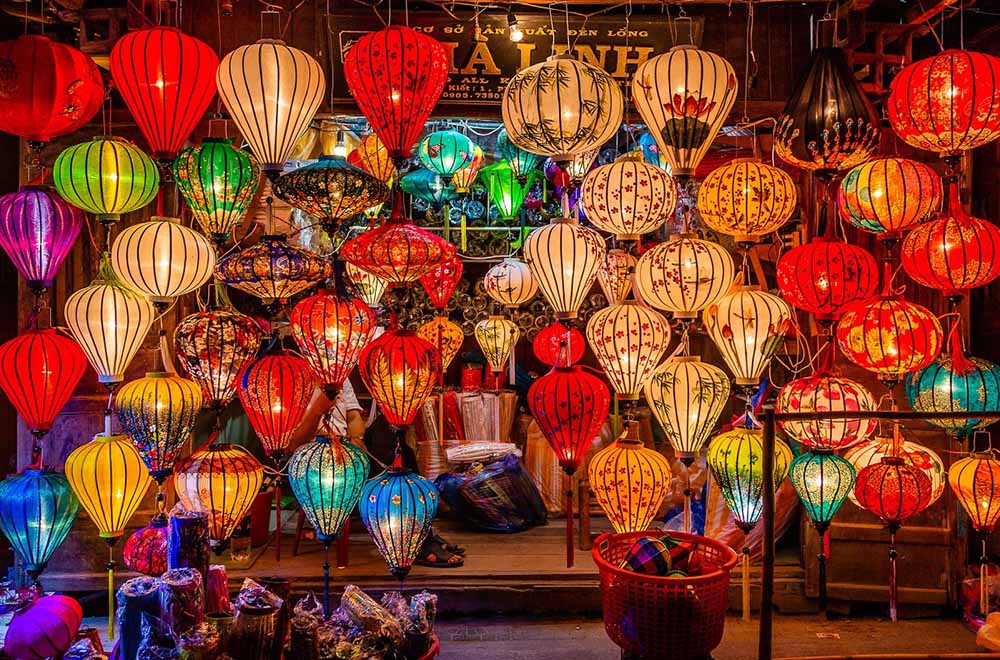
The Hoi An Craft Villages are renowned for their lantern-making tradition, which has become the most iconic image associated with the city. Whether you're strolling through the lantern-lined streets, admiring the reflections in the river, or simply searching for Hoi An online, the colorful lanterns are an integral part of the city's identity.
This branding success can be attributed to the Hoi An lantern-making craft villages, which have been practicing this traditional profession for at least 400 years. The lanterns are a product of a harmonious blend of Vietnamese, Japanese, and Chinese cultures, much like the famous Temple Bridge.
Crafted from bamboo and silk fabric, Hoi An lanterns exude a soft, charming, and beautiful aesthetic. Initially used by Chinese merchants to illuminate their stores, lanterns later became essential decorative elements for major holidays and festivals, particularly during the rise of Buddhism. Today, they are key components in creating Hoi An's unique nightlife.
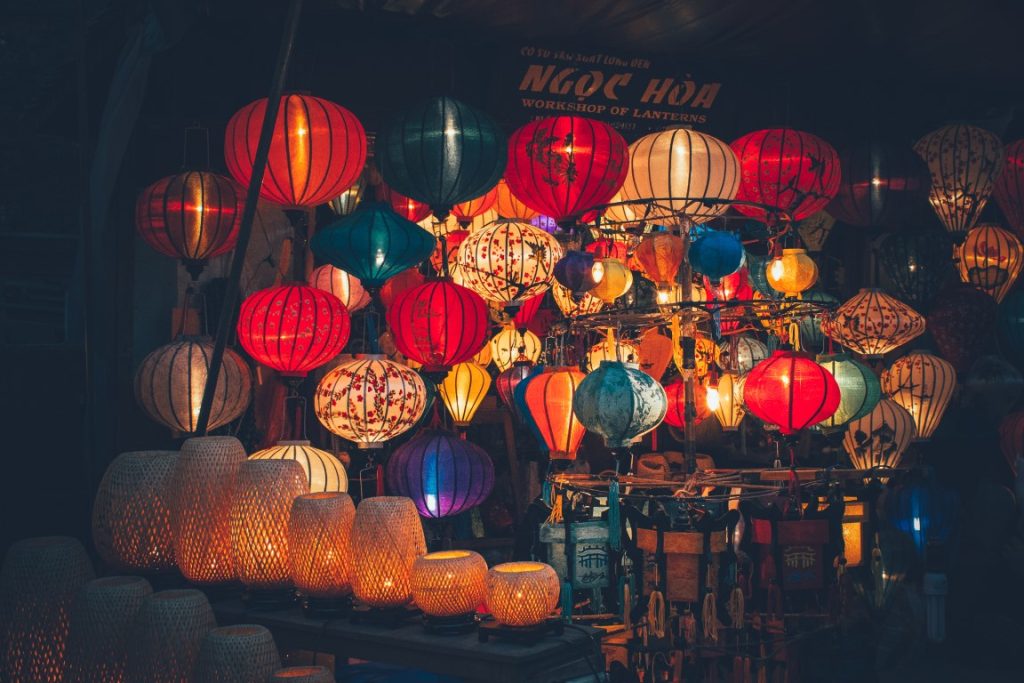
Despite facing the risk of being lost, the lantern-making handicraft was preserved through government intervention and tourism promotion. In 2011, it was recognized as one of the nine traditional craft villages in Vietnam by the Vietnam Craft Villages Association. Hoi An now boasts over 30 factories and more than 200 lantern businesses, where tourists can visit, purchase, or even create their own lanterns as souvenirs.
The Hoi An Lantern Making Village, located in the heart of Hoi An Ancient Town, is one of the most famous traditional craft villages in Central Vietnam. With a history spanning hundreds of years, the craft of lantern-making has become a primary source of employment for hundreds of local workers and plays a crucial role in promoting the traditional lantern's image to both domestic and foreign consumers.
The village's largest establishment, Đèn Lồng Tết (Tet Lantern), produces a wide variety of hand-crafted lanterns in different shapes, sizes, and colors. The most popular shapes are balls and garlic, while the most common colors are white, blue, red, and yellow, symbolizing good luck and prosperity for the coming year.
Creating a beautiful and durable lantern requires skilled craftsmanship at every stage, from selecting the bamboo, sharpening the sticks, and dyeing the silk, to adding decorative fringes for a livelier appearance. Hoi An Lanterns are not only decorative objects but also serve as symbols of the Lunar New Year, alongside apricot and peach branches, signaling the arrival of a new year.
Conclusion
Discover the beauty of Hoi An Craft Villages, where artistry and tradition blend seamlessly.
To explore more of what this charming town has to offer, visit our detailed Hoi An Travel Guide. If you’re interested in delving deeper into Hoi An's rich history, don’t miss the Hoi An Museums. Your journey through Hoi An will be truly unforgettable.






